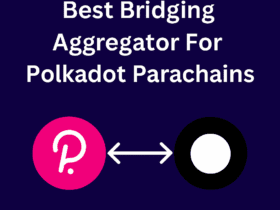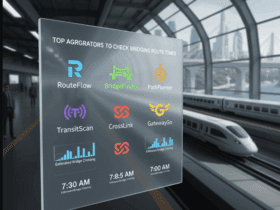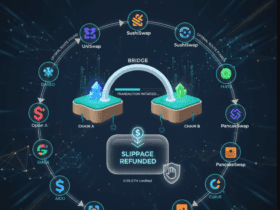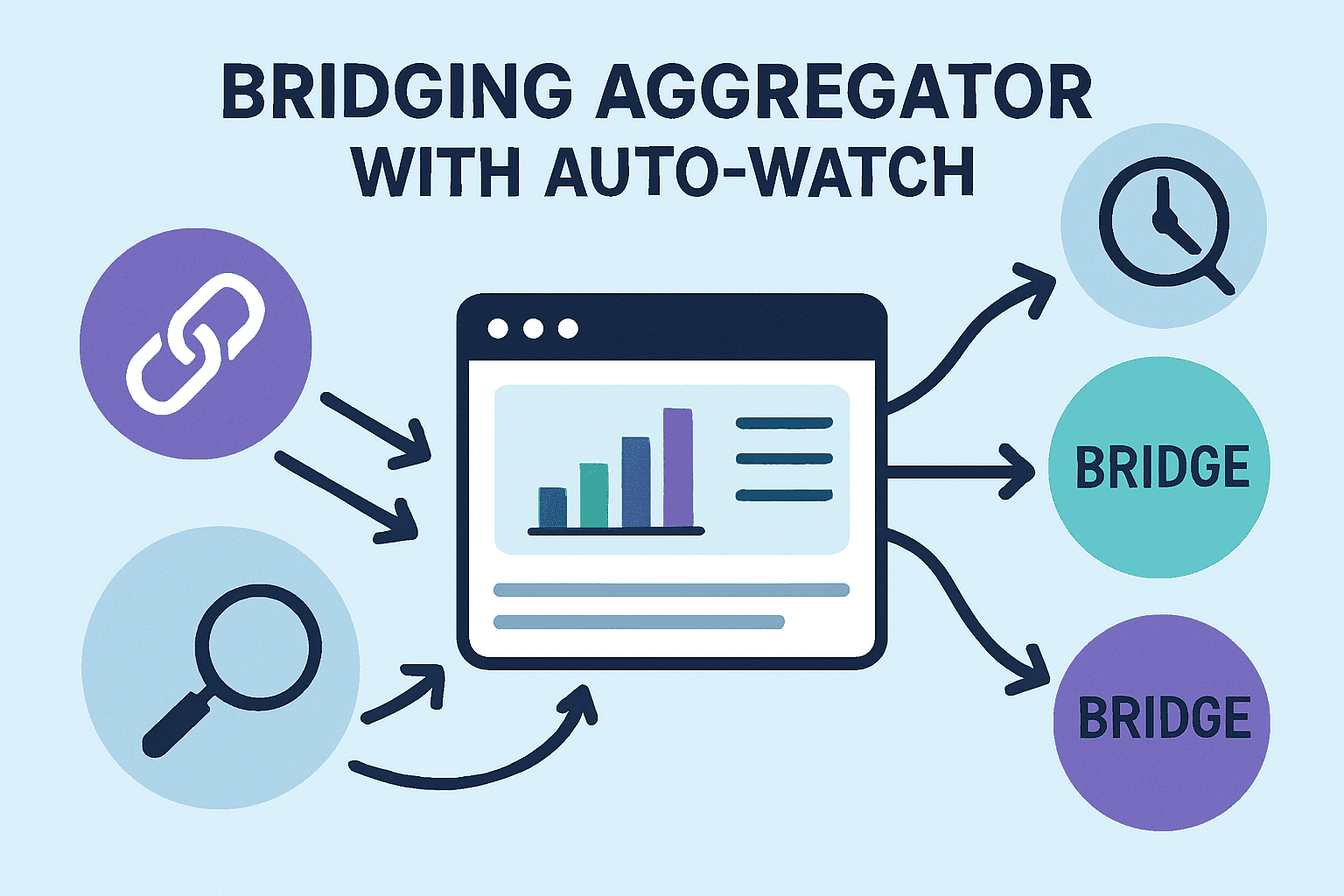In this article, I will explore the Best Social Media Aggregator Tool to help you manage all your social accounts from one place. These tools simplify posting, tracking, and analyzing content across platforms.
Whether you’re a business, marketer, or influencer, understanding the right aggregator can save time, boost engagement, and make social media management far more efficient.
How We Choose Best Social Media Aggregator Tools
Platform Coverage—We prioritize applications that interface natively with the leading platforms (Facebook, Instagram, Twitter, LinkedIn, and TikTok) to guarantee cohesive data capture.
User Onboarding—Only products with intuitive dashboards, drag-and-drop functionality, and guided setup workflows advance, as these qualities minimize the learning curve for digital marketers.
Queue and Automation—Advanced scheduling, trigger-based posting, and bulk-upload capabilities enhance productivity by enabling marketers to deploy strategic content well in advance.
Insight Generation—Aggergator packages with granular analytics dashboards, exportable KPI reports, and attribution modelling empower teams to refine campaigns based on quantitative evidence.
Curation—We favour solutions that employ AI to surface high-performance, brand-consistent content from external feeds, thus elevating the overall social media narrative without requiring constant manual intervention.
Team Integration—Collaborative functionality—role-based permissions, workflow approvals, and unified content calendars—secures streamlined job execution in environment oriented toward constant teamwork.
Ongoing Maintenance and Support—Solutions that guarantee robust system uptime, comprehensive knowledge bases, and responsive technical assistance during operational hours are selected for sustained reliability.
Pricing & Value – We align functionality with subscription cost to verify that each platform delivers discernible value that justifies the investment.
Key Points & Best Social Media Aggregator Tools List
| Social Media Aggregator Tool | Key Point / Feature |
|---|---|
| Hootsuite | Centralizes multiple social media accounts; scheduling & analytics included. |
| Buffer | Simple post scheduling; performance analytics and team collaboration. |
| Sprout Social | Comprehensive analytics, engagement tracking, and social listening. |
| Zoho Social | Supports multiple platforms, monitoring, and team collaboration. |
| SocialBee | Content categorization and automated posting across platforms. |
| Agorapulse | Unified inbox, scheduling, reporting, and social listening. |
| Later | Visual content calendar, Instagram-first focus, and analytics. |
| Feedly | Aggregates content from multiple sources; ideal for content curation. |
| Curata | AI-driven content curation and publishing across channels. |
| Scoop.it | Content discovery and aggregation for social sharing and marketing. |
10 Best Social Media Aggregator Tools
1.Hootsuite
Hootsuite ranks among the leading social media aggregator platforms, permitting seamless administration of diverse social accounts via a consolidated dashboard.
Supported networks include Facebook, Instagram, Twitter, LinkedIn, and YouTube, permitting advance scheduling, consolidated content oversight, and centralized engagement measurement.

The service furnishes detailed analytics that gauges post efficacy, tracks audience expansion, and evaluates the overall success of campaigns. Designed for both individuals and enterprises, its collaborative functionality provides teams the capacity to manage several profiles simultaneously.
Furthermore, extensive integration with supplementary marketing applications amplifies operational productivity, rendering Hootsuite a robust and adaptable resource for users at any expertise level.
| Pros | Cons |
|---|---|
| Supports multiple social media platforms in one dashboard. | Can be expensive for small businesses. |
| Powerful scheduling and automation features. | Learning curve for beginners. |
| Offers analytics and reporting to track performance. | Some advanced features require higher-tier plans. |
| Team collaboration tools for agencies and businesses. | Interface may feel cluttered for casual users. |
| Integrates with other marketing tools and apps. | Free plan is very limited. |
2.Buffer
Buffer is a streamlined social media management solution designed to simplify the scheduling and dissemination of content across various platforms.
It interfaces with Facebook, Instagram, Twitter, LinkedIn, and Pinterest, permitting users to queue posts ahead of time, evaluate performance indicators, and fine-tune publication prompts to broaden audience visibility.

The platform’s uncluttered design and straightforward procedures appeal particularly to small enterprises and solo operators. Collaborative functionality permits several users to oversee and execute marketing initiatives with ease.
In-built reporting displays metrics such as click-throughs, shares, and engagement patterns, equipping marketers with actionable insights while conserving time and preserving a steady social presence.
| Pros | Cons |
|---|---|
| Simple and intuitive interface. | Limited analytics in free version. |
| Supports major social media platforms. | Scheduling is basic compared to competitors. |
| Affordable pricing for small businesses. | No in-depth social listening tools. |
| Team collaboration features available. | Limited customization for reporting. |
| Efficient post planning and queue management. | Not ideal for large enterprises. |
3.Sprout Social
Sprout Social represents a multifaceted social media management solution that commands respect in aggregation, analytical rigor, and customer engagement.
By consolidating a wide spectrum of social platforms within a single, intuitively designed dashboard, it empowers collaborative teams to surveil dialogues, schedule broadcasts, and reply to audience inquiries in real time.
Sophisticated analytic modules elucidate audience dynamics, content efficacy, and emergent social phenomena, furnishing clients with empirical evidence to refine marketing paradigms. Its social listening capabilities surface trending topics, brand citations, and customer sentiment correlations.

The workspace facilitates cooperation through task delegation, content approval workflows, and multi-user report generation. Collectively, these features equip enterprises, agencies, and growth-oriented brands to cultivate a purposeful, data-driven social media footprint.
| Pros | Cons |
|---|---|
| Comprehensive analytics and reporting. | Relatively expensive. |
| Social listening tools to monitor trends and brand mentions. | Not ideal for individual users. |
| Supports multiple platforms in one dashboard. | Can be complex for beginners. |
| Team collaboration with approval workflows. | Limited content curation options. |
| Robust engagement management for brands. | Some users find interface overwhelming. |
4.Zoho Social
Zoho Social serves as a multi-channel social media management tool tailored for SMEs and agencies. Users can consolidate Facebook, Instagram, LinkedIn, Twitter, and additional networks into a single dashboard, enabling the scheduling of posts as well as the continuous assessment of audience interactions and overall brand health.

The platform delivers instantaneous analytics and customizable reports, facilitating the refinement of marketing strategies by mapping audience preferences in real time. Built-in collaborative capabilities permit diverse teams to oversee brand accounts through defined workflows, complete with approval hierarchies and permissions reliant on assigned roles.
Synergy with the broader suite of Zoho applications further deepens the efficacy of cross-channel campaigns. By marrying straightforward usability with intelligent automation and comprehensive analytics, Zoho Social emerges as a compelling, budget-friendly choice for enterprises intent on scaling their social media efforts.
| Pros | Cons |
|---|---|
| Supports multiple social platforms. | Analytics may not be as advanced as competitors. |
| Team collaboration and workflow management. | Limited integrations compared to some tools. |
| Affordable pricing for small businesses. | UI may feel less modern. |
| Real-time analytics and performance tracking. | Learning curve for advanced features. |
| Seamless integration with other Zoho products. | Some automation features require higher plans. |
5.SocialBee
SocialBee serves as an aggregation and management platform specifically engineered for automating and categorizing social media content. By segmenting postings into user-defined categories, the system facilitates scheduling, resampling evergreen material, and sustaining nonstop audience engagement. Compatibility extends to leading social networks—Facebook, Instagram, Twitter, LinkedIn, and Pinterest.

A consolidated performance dashboard generates engagement metrics and analytical insights, empowering users to adjust strategies promptly. In addition, the platform incorporates collaborative workspaces for teams, content prompts, and seamless integration with RSS feeds, thereby accelerating the curation process.
The systematic workflow and built-in automations render SocialBee particularly advantageous for marketers and small enterprises aiming to maximize social media activity with minimal resource expenditure.
| Pros | Cons |
|---|---|
| Content categorization and recycling for consistent posting. | Limited platform support compared to bigger aggregators. |
| Automation tools save time. | Analytics are basic in lower-tier plans. |
| Supports team collaboration and approvals. | User interface may require adjustment. |
| RSS feed integration for content curation. | Not ideal for large enterprises. |
| Affordable and efficient for small businesses. | No advanced social listening. |
6.Agorapulse
Agorapulse is an integrated social media management tool that excels in engagement, post scheduling, and performance analytics. Compatible with Facebook, Twitter, Instagram, LinkedIn, and YouTube, the application merges incoming messages and alerts into a single, streamlined inbox, facilitating rapid oversight and response.
Professionals can pre-schedule posts, oversee cross-channel campaigns, and track brand mentions in a cohesive workflow. Comprehensive reporting quantifies content reach, follower acquisition, and interaction rates. Within the same interface, defined roles, approval routing, and shared calendars promote synchronized team collaboration

While granular permissions protect sensitive actions. Furthermore, proprietary social listening functionality monitors competitor activity and sector developments. The platform is particularly suited for enterprises, digital agencies, and individual social media specialists who require a robust, unified solution for publishing, analytics, and audience engagement.
| Pros | Cons |
|---|---|
| Unified inbox for engagement management. | Pricing can be high for small businesses. |
| Detailed analytics on posts and campaigns. | Limited content discovery features. |
| Supports multiple social networks. | Interface may feel cluttered initially. |
| Team collaboration with approval workflows. | Some advanced reporting features in higher plans. |
| Social listening to track trends and competitors. | Limited automation options compared to others. |
7.Later
Later is a platform designed specifically around visual story-telling, primarily for Instagram, with supplementary support for Facebook, Twitter, and Pinterest.
Its drag-and-drop calendar feature simplifies the scheduling of posts, enabling users to establish and maintain a steady publication rhythm. By centering visual media, the service includes a well-organized media library for efficient handling of images and videos.

Built-in analytics yield insights into engagement levels, optimal posting windows, and various performance indicators, allowing for continual refinement of content strategy. The platform enhances Instagram activity with linkin.bio integrations that funnel post traffic to external destinations.
The combination of intuitive design, visual organization, and thoughtful automation positions Later as a preferred choice for small enterprises, content creators, and marketers primarily oriented toward imagery.
| Pros | Cons |
|---|---|
| Drag-and-drop visual content calendar. | Focused mostly on Instagram; limited support for other platforms. |
| Easy media management for images and videos. | Analytics are basic on free plan. |
| Scheduling automation for multiple posts. | Not ideal for text-heavy content marketing. |
| Best posting time recommendations for engagement. | Limited social listening tools. |
| Linkin.bio integration to drive traffic. | Free version has limited features. |
8.Feedly
Feedly operates principally as a content aggregator rather than a standalone social-media management application. The platform pulls in live updates from blogs, news portals, and any publicly accessible RSS feeds, allowing users to assemble a curated reading list that can subsequently serve as inspiration or material for social-media posts.
Within Feedly, users can group saved articles into flexible collections or boards for rapid retrieval, a feature particularly beneficial to marketers and creators scouting for emerging or trending discourse.

The platform complements its web and mobile interfaces with direct application programming interface (API) hooks to popular social-media scheduling tools, ensuring that once content is flagged for further dissemination, publication across different platforms can occur effortlessly.
| Pros | Cons |
|---|---|
| Aggregates content from multiple sources efficiently. | Not a direct social media posting tool. |
| AI-powered content discovery suggestions. | Requires integration with scheduling tools for social sharing. |
| Organizes content into boards/collections. | Free version has limited features. |
| Ideal for content curation and inspiration. | No direct analytics for social media posts. |
| Time-saving for marketers and content creators. | Learning curve for new users. |
9.Curata
Curata represents a sophisticated platform for content aggregation and curation, specifically engineered to meet the exigencies of digital marketing professionals.
Leveraging proprietary artificial intelligence, the application autonomously identifies and collates pertinent material from a wide spectrum of external repositories, subsequently structuring the data for dissemination via social-media feeds or blog entries.
Key features include customizable publishing calendars, hierarchical content tagging, and multi-dimensional performance dashboards, all of which substantially reduce time-to-market for marketing assets.

Comprehensive analytic metrics furnish executives with granular visibility across engagement rates, audience reach, and calculated return on investment, enabling agile strategic recalibrations.
Built-in connectors facilitate seamless data exchange with leading customer-relationship management and marketing-automation ecosystems.
Given its feature set, the platform is best suited for mid-sized to enterprise-level organizations demanding a resilient, intelligent solution to the challenges of continuous, high-quality content distribution.
| Pros | Cons |
|---|---|
| AI-driven content discovery and curation. | Expensive; more suitable for medium to large businesses. |
| Content categorization and scheduling. | Can be complex to set up initially. |
| Analytics to track engagement and ROI. | Limited social network support compared to aggregators. |
| Integrates with marketing and CRM tools. | Not beginner-friendly. |
| Saves time for content marketing teams. | Heavy focus on content curation over social listening. |
10.Scoop.it
Scoop.it is a content curation and aggregation tool designed for marketers seeking to discover, organize, and distribute curated materials efficiently. The service facilitates sharing directly to major networks such as Facebook, Twitter, and LinkedIn, in addition to automatic posting to WordPress blogs.
Users construct topic-specific boards to archive and label discoveries, while engagement metrics and advanced analytics track performance over time.

The platform further supports content scheduling and can be connected to other social media management suites. Scoop.it’s AI-enhanced discovery engine recommends real-time articles aligned with predefined interests, thus reducing content discovery time.
The service specializes in building thought leadership, executing content marketing campaigns, and refining social media tactics, enabling organizations to sustain a credible and visible online presence by consistently disseminating high-caliber, curated resources.
| Pros | Cons |
|---|---|
| AI-powered content discovery. | Pricing may not suit small businesses. |
| Organizes content into boards for easy sharing. | Limited advanced analytics. |
| Supports sharing to multiple social media platforms. | Focused more on content curation than engagement. |
| Scheduling and integration with other social tools. | Free plan is very limited. |
| Helps maintain thought leadership and active presence. | Some advanced features require premium plans. |
Key Factors That Make These Tools The Best
| Factor | Explanation |
|---|---|
| Multi-Platform Integration | The ability to pull content from multiple social media networks (Instagram, Twitter/X, Facebook, LinkedIn, TikTok) into a single feed or dashboard. |
| Real-Time Updates | Aggregators that show live feeds or near real-time content help users stay current with trends and engagement. |
| Customizable Feeds | Users can filter content by hashtags, keywords, users, or specific platforms to focus on relevant updates. |
| Content Scheduling & Management | Some tools allow posting or scheduling directly from the aggregator, improving workflow efficiency. |
| Analytics & Insights | Provides engagement metrics, audience data, and performance insights to measure reach and impact. |
| Ease of Use | Intuitive dashboards and simple setup make aggregators accessible for individuals and businesses alike. |
| Branding & Display Options | Ability to embed feeds on websites, display live social walls at events, or customize the look to match brand identity. |
| Security & Compliance | Ensures that API connections with social networks are secure, and content usage complies with platform rules. |
| Automation | Smart aggregation, content curation, and auto-updating reduce manual monitoring effort. |
Conclsuion
In summary, selecting an appropriate social media aggregator enhances the efficiency of content oversight, amplifies audience interaction, and conserves valuable time resources.
Hootsuite, Buffer, and Sprout Social are distinguished by their advanced post-scheduling, comprehensive performance analytics, and multi-user collaboration modules.
Conversely, Feedly and Curata are superior in content aggregation and curation. The final choice of platform should align with platform-specific requirements, organizational team dynamics, and overarching marketing objectives, thereby guaranteeing uniform and impactful social media stewardship.
FAQ
It’s a tool that collects, organizes, and manages content from multiple social media platforms in one dashboard.
Buffer, SocialBee, and Zoho Social are cost-effective and easy to use.
Sprout Social and Hootsuite provide advanced reporting and engagement insights.












Got a Questions?
Find us on Socials or Contact us and we’ll get back to you as soon as possible.